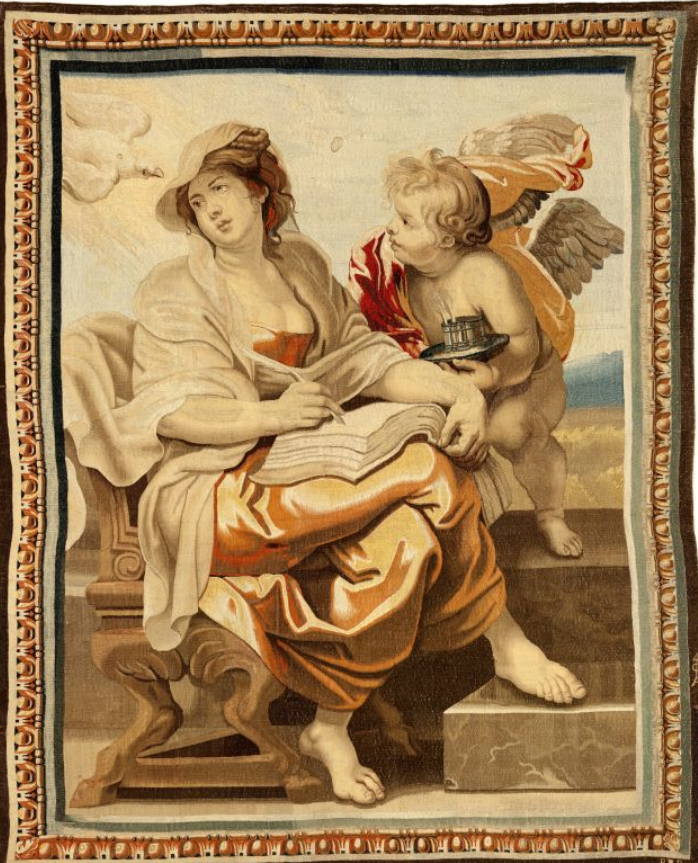An Introduction to Premodern Historiography
A preliminary guide to continuities and ruptures
Despite the importance of historiography for modern enthusiasts of history, it often seems a intimidating subject with a high barrier to entry, mired in abstract theoretical, philosophical, and methodological jargon. The essays collected here take both a chronological and thematic approach to highlighting important developments, shifts, inflection points, continuities, and ruptures in the way people have conceived and produced historical interpretations of the western world. This website showcases the collaborative essays produced by an undergraduate historiography course at the University of New Mexico.
You should make your abstract look like this, too! Below is the snippet of code that will do that. It’s not Markdown, but plain HTML. You can copy and paste this into your essay, and then paste in your actual abstract. Do not include references in your abstract.
<p class="abstract">
This website showcases the collaborative essays produced by an undergraduate historiography course at the University of New Mexico.
</p>

What is Historiography?
Even the very concept of historiography causes some confusion for most people. On one hand, it’s a study of history itself, a history of history. On the other hand, in the more literal sense of the word, it’s the act of writing history. While these are often different enterprises (perhaps the study of history should be called something like historiology, but it’s not), they are both considered historiography.
While reading history often seems like an adventure into the past, it never fully leaves the present. Yet the ways in which existing power structures, political ideologies, personal interests, cultural criticism, and professional conventions impose on our narratives (and even the narrative form itself) and interpretations of the past are rarely obvious. Historiography, then, in the sense of a general considerations of the forces of production of historical writing, remains indispensible for any critical reading of history.
Despite the importance of historiography for modern enthusiasts of history, it often seems a intimidating subject with a high barrier to entry, mired in abstract theoretical, philosophical, and methodological jargon. The essays collected here take both a chronological and thematic approach to highlighting important developments, shifts, inflection points, continuities, and ruptures in the way people have conceived and produced historical interpretations of the western world. Its chronological scope is roughly Greek antiquity through the European Enlightenment; each essay focuses on a particular time period, but shows reaches both forward and backward in time to better situate and explain historiographical developments.
Two of our guiding questions have been: Who is history for? and What is history for? These essays show through careful synthesis of secondary sources and copius references to primary sources how this question can and perhaps should be answered at various periods throughout history. They emphasize the forest rather than the trees; readers curious for more detail can pursue the topic through the bibliographies for further reading at the end of each essay.
Contributors
This site is the product of an ambitious and fearless group of historiographers working through difficult historiographical readings for the first time. While each essay features its author’s (or authors’) name(s), the entire project benefitted from wide-ranging, provocative, enlightening, and at times seriously frustrating discussions. Many thanks and appreciation to Mara Anderson, Alison Atencio, Kyle Chicharello, Tiersa Cimino, Robert Collins, Jonathan Cox, Cody Dowd, Jamie Fowler-Diaz, Mckenzie Manwill, David Morin, Zakery Munoz, Alex Nocella, Mary Phibbs, Charles Risse, Sarah Sykes, and Madeline Whitacre.
For now, this page will also serve as a last-minute writing guide—things to review and improve before the end of finals week, which is the latest possible deadline I can give you.
Things to check for:
- Meaningful headings
- Do not use bold in your headings; use an appropriate heading level (as shown below). Let me know if you need some other kind of heading!
- Informative first sentences that have a clear progression through the essay
- Consistent use of bold and italics, both throughout your essay and roughly compared to other essays. Don’t use either too often, or it negates the effect of highlighting something. Do not use either for references; leave those as plain text.
You may have noticed this page has an image. You, too, can insert images into your post by copying and pasting the below snippet into your Markdown code just before the paragraph in which you’d like the image to appear. The below code is exactly what’s used to inlay the above image. Obviously, you’ll need to change the filename to that of your image. We’ll talk about uploading images next week.
{% include figure.html class="img-right" src="Historiography.png" %}
We can now add and stylize pull quotes, whether from one of your primary sources or yourself. They aren’t quite as visually effective when they are super long, but hopefully they can help indicate to readers one of the main ideas you are trying to communicate. The way you can create these is shown below; you can copy and paste this snippet into your Markdown files, and change the quote. You don’t need to have references in your quotes, but try to integrate these quotes into your essay as well and provide a reference there. That allows you to make clear why you are referencing the quote in the first place, rather than leaving it to the reader to guess.
<p class="has-pullquote" data-pullquote="This is a sample pullquote. Copy the code to make your quotes stand out like this."></p>
For your reference, all the headings styles are demonstrated below. Remember that you must have a space between the ### and the actual heading!
So,
### Title 3
will produce:
Title 3
and the other common styles render as follows:
Title 4
Title 5
List
- item 1
- item 2
- put two spaces in front of your dash to sub-indent
- item 3
If you can’t find what you need on this page, please consult the Markdown basic writing and formatting guide.